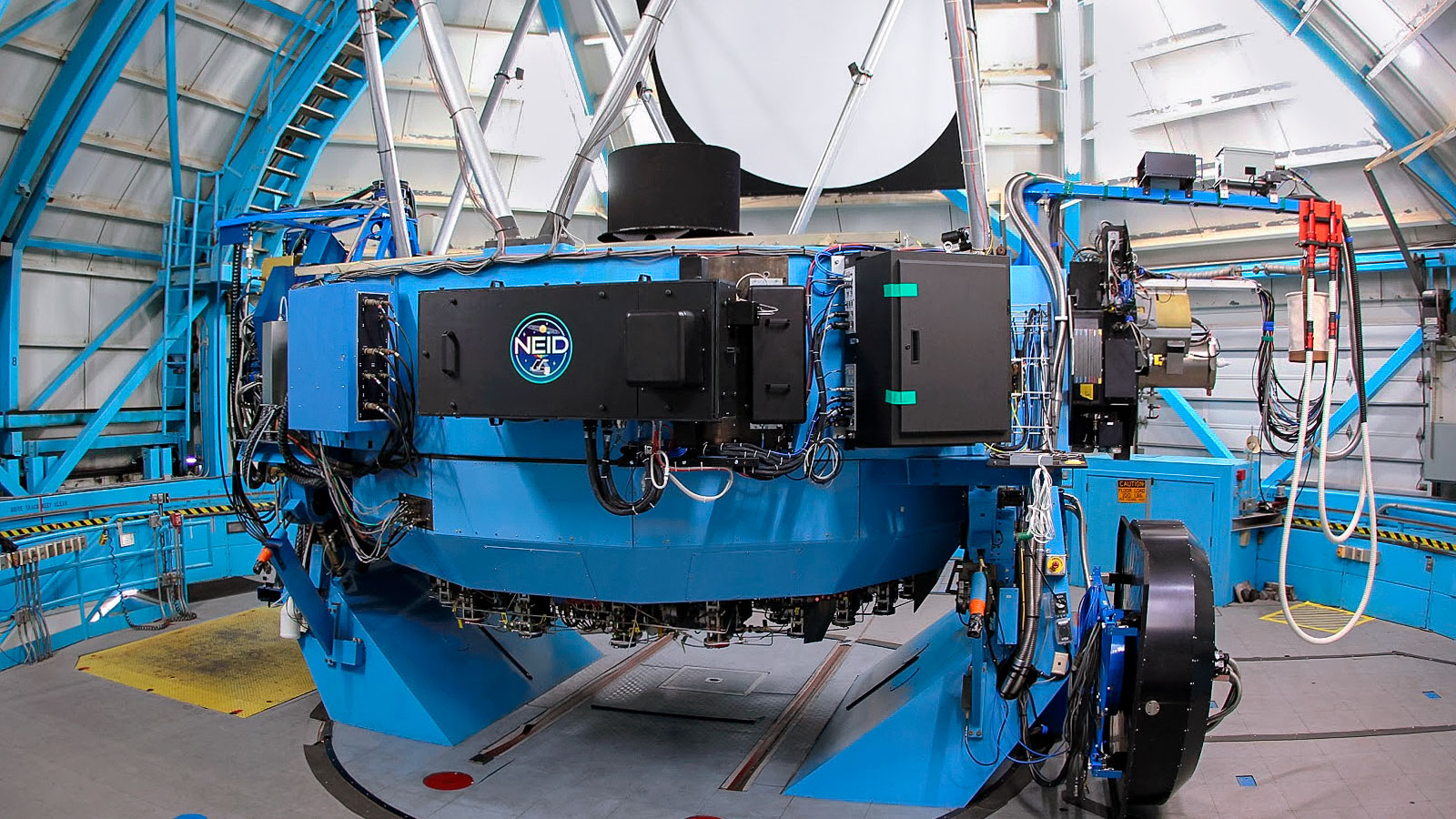
Researchers have shown the first results from a new instrument for calculating the weight of distant exoplanets. The NN-EXPLORE Exoplanet Investigations with Doppler spectroscopy, or NEID, is an instrument mounted on the WIYN telescope at the Kitt Peak National Observatory and is funded by NASA and the National Science Foundation.
Tools like the planet-hunting TESS telescope work by looking at the light coming from stars and seeing if there are periodic dips in light levels. If there are, this indicates a planet may be passing between the star and the Earth. If this dip happens on a fixed schedule, that suggests a planet in orbit.
The way NEID investigates distant planets is different: It looks for a tell-tale “wobble” of the stars around which the planets orbit. The same thing happens in our solar system — when a massive planet like Jupiter moves around the sun, its strong gravity causes the sun to move back and forth at roughly 43 feet per second (13 meters per second). The Earth produces this effect too, although as it is smaller and less massive, it only causes a wobble of 0.3 feet per second (0.1 meters per second). The larger the planet is in relation to the star, as well as the closer it is, the more wobble it causes.
Other instruments can detect wobbles of 3 feet (1 meter) per second, but NEID is more sensitive and can detect with three times the precision of these previous instruments. This means it can find rocky planets orbiting around smaller stars than our sun, as well as having a greater chance of locating smaller Earth-sized planets.
By observing stars’ wobbles, researchers can work out all sorts of information about orbiting planets, including their diameter, mass, and density. The density shows whether the planet is rocky or gaseous, and the distance from the star gives an indication of the surface temperature. Eventually, researchers may be able to locate Earth-like planets in orbit around sun-like stars at a distance which would allow liquid water to exist on their surfaces.
The “first light” image of NEID was shown off this week at the 235th meeting of the American Astronomical Society in Honolulu, illustrating the light detected from the sun-like star 51 Pegasi in the constellation of Pegasus.
Editors' Recommendations
- James Webb researcher on how telescope will investigate exoplanet atmospheres
- Astronomers discover ‘Jupiter’s identical twin’ exoplanet
- James Webb’s MIRI instrument has both a heater and a cooler
- If these nearby stars hosted an exoplanet, here’s what it might be like
- This exoplanet has two suns – just like Tatooine




